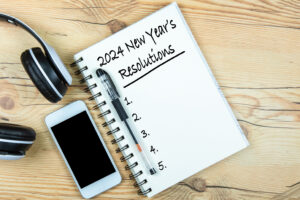So much discussion has been had about the state of juries these days due to the rising trend in nuclear verdicts. Jurors’ declining trust, changing value of money, desire to change the world with their verdict, and the growing millennial/Gen Z make-up are just a few of the common gripes we hear from defense attorneys. Of course, there is truth in each of these, but the complaint we hardly ever hear is how the defense attorney made mistakes at trial that contributed to the outcome.
In this business, it is extremely difficult to acknowledge or admit mistakes. Clients only want to hire good, successful defense attorneys and recognition of mistakes cuts against the professional image that is so critical to growing and maintaining a book of business. The result is there is not enough open discussion about the kinds of mistakes attorneys make at trial. Instead, it is so much easier to simply blame the jury since they are the crazy ones, right?
In this blog, I want to break through those barriers and highlight the big mistakes we see defense attorneys make when presenting their damages strategy at trial. Each of these are factors that only fuel jurors’ motivation to deliver a nuclear verdict.
1. The arbitrary, lowball anchor. Low counter figures undoubtedly have the unconscious effect of counter-anchoring the plaintiff numbers. A $2M counter-anchor in a case where the plaintiff asks for $70M gives jurors a range of $2M to $70M to consider. However, our research shows defense attorneys run a much greater risk in counter-anchoring than plaintiff attorneys do with their initial anchor, and the reason has to do with the arbitrary nature of the defense anchor. Jurors expect defense attorneys to “lowball” the plaintiff. Consequently, defense counter-anchors, with no clear rationale behind them, only reinforce jurors’ beliefs that the defense is “lowballing” the plaintiff, which can fuel the frustration that drives jurors towards the plaintiff’s anchor.
2. Failing to offer a framework for thinking about damages. Jurors constantly complaint about how difficult it is to determine a noneconomic award, which research has shown is the primary source of nuclear verdicts. They hate the lack of guidance, and they desperately want a process for figuring out the “right” number. Too often defense attorneys fail to meet this important juror need, which leaves them with only their “gut feelings.” Gut feelings favor plaintiffs, not defendants, and will almost always produce an award that is substantially higher than what the defense thinks is “reasonable.” Instead, defense attorneys need to go beyond their declarations that the law says jurors must be reasonable and fair and give jurors an actual process for determining a fair amount. As I’ve written in numerous publications, a starting point is framing the central question as, “How can money help the plaintiff?” followed by a list of specific and practical ways money can help the plaintiff in the future. Jurors are more likely to see a counter-anchor as reasonable if they have a clear understanding of how it helps the plaintiff meaningfully recover from their injuries. Plus, this grounds the discussion in a practical view of money, which our research shows favors the defense.
3. Feigning compassion. As an old colleague used to routinely declare, “jurors have finely-tuned bulls**t detectors,” and there is nothing they dislike more than disingenuous “lip service” from defense attorneys, especially when those attorneys are representing big corporations against seriously injured plaintiffs. We’ve seen plenty of instances where disingenuous statements of compassion got worst reactions from the jurors than had the defense attorney offered no statement at all.
4. Words without action. Similar to feigned compassion, jurors do not like when defense attorneys offer words without actions. Admitted liability cases where defense attorneys insist the jurors must arrive at an award that is fair and reasonable come to mind. Too often, attorneys tell them their alternative damage figure is “fair and reasonable,” but do little to show them why it’s fair and reasonable. It amounts to asking jurors to just trust them, which most jurors are not inclined to do. Some defense attorneys might try to tie it something, like suggesting they double the total economic award to arrive at the noneconomic award. While that is certainly better than no rationale at all, it does nothing to help jurors understand why that is fair and reasonable. If the defense wants jurors to be fair to the plaintiff, it needs to help them better understand why the defense numbers are actually fair by showing that they will have a meaningful impact on the plaintiff’s life. The alternative damages framework is a good start.
5. Refusing to acknowledge the obvious. Sometimes defense attorneys are stuck with this problem, such as in a product liability case where the client cannot admit liability no matter how strong the plaintiff’s evidence is. Other times, defense attorneys make poor strategic decisions that appear as if they refuse to acknowledge obvious issues. One of the most common instances of this is when attorneys refuse to acknowledge the seriousness of the plaintiff’s injuries. It makes sense at first glance that a defense attorney might be reluctant to acknowledge things that work against their client’s case, but sometimes the juror anger that comes from such refusals well outweighs the downside of acknowledging the obvious. Furthermore, research has shown that two-sided persuasion (i.e. persuasion where speakers recognizes the weaknesses in their arguments or strengths in those of their opponents) can be very effective in a trial setting.
6. Advancing low credibility arguments. Years ago, we worked on a wrongful death case where a tractor trailer failed to respond to stopped traffic on the highway and collided with several stopped vehicles while traveling at highway speeds. One of the claims adjusters in the case desperately wanted to know at the mock trial whether it mattered to jurors that a couple of the (deceased) plaintiffs were not wearing their seatbelts, even though the post-accident images of what was left of the plaintiff’s vehicles would make the average person think it is outrageous and absurd to ever suggest a seatbelt might have made a difference. Yet it is not unusual to hear defense attorneys advance similarly low credibility arguments, which is a great way to make jurors very angry.
7. Nickel and diming plaintiffs. Jurors are persuaded on damages when they believe the defendant genuinely cares about the plaintiff and wants them to be taken care of with the damage award. This does not mean defendants need to offer large money awards. The alternative damages framework allows defendants to appear generous while still keeping the overall damages low. However, it does mean that defense attorneys need to be more careful about the damages items they choose to challenge. For example, I recently saw a case where the defense attorney wanted to challenge an item in the plaintiff’s lifecare plan that set aside money for assistance with yard work. There was evidence the plaintiff might be able to do it himself, but there was also decent evidence that the plaintiff needed this assistance. The total cost was roughly $50K in an admitted liability case where the plaintiff was asking for more than $50M. The jurors thought the plaintiff likely could not do his own yardwork and hated the defense attorney’s decision to question this line item. Instead of saving the client $50K, the defense attorney angered the juror by convincing them the defendant was only trying to “nickel and dime” the plaintiff, which motivated them to award more, not less money in the case.
8. Leading with the total. As previously noted, jurors expect corporate defendants to “lowball” plaintiffs, meaning they are waiting for it to happen and looking for signs that it is happening. Even when defense attorneys adopt an alternative damages framework that shows jurors what money can do for the plaintiff, they sometimes undo its positive effects by leading with the total alternative damages number. Instead, they should begin with the line-by-line and show how amounts for all the different subcategories can help the plaintiff and only show what all those subcategories add up to after they have walked jurors through the line-by-line in detail. This ordering effect allows jurors to understand the rationale before they hear the total alternative number, which decreases the likelihood they will perceive it as a “lowball” offer. Conversely, our research has shown that leading with the total alternative figure triggers “lowball” expectations, which undermines the defense’s credibility before it ever has a chance to show jurors why its numbers are fair and reasonable. This is also the reason the emerging trend of defense attorneys counter-anchoring in voir dire is ineffective and more likely counterproductive.
9. Ignoring the presentational dynamic of the corporate representative. I’ve often daydreamed about putting together a CLE on witness training of corporate representatives that consists of nothing other than a montage of mock jurors talking about how much they hated a particular corporate rep and how those negative reactions impacted their views of the case. These clips are a dime a dozen. One of my favorites involves a mock juror acknowledging that the plaintiff had little evidence of negligence, but that the testimony of the corporate rep was so bad, that he still found in favor of the plaintiff. I’ve seen many other mock jurors dislike a corporate rep so much that they decided to use noneconomic damages to “send a message” that the corporate rep needs to change the way he or she thinks about issues in the case. The fundamental problem is that too many witness prep sessions consist of sitting around a conference room for hours or days and talking through the issues in the testimony. Instead, defense attorneys need to spend lengthy periods of times conducting mock cross examinations with their corporate reps, not allowing them to call “time out” when they are struggling. They need to experience that pain and learn from it, and they need to see how their performance (not just their literal words) come across.
10. Wasting critical voir dire time with priming and persuading. Voir dire has become the land of lost opportunity in so many cases because defense attorneys are convinced priming is more important than de-selection. We have very clear profiles of who the nuclear jurors are most likely to be, both from a demographic perspective, as well as from a life experience perspective, but when so much time is wasted on priming and persuading in voir dire, it becomes difficult to sufficiently identify these high-risk, nuclear-prone individuals and remove them from the panel. Making matters worse, studies in recent years have shown that efforts to prime in voir dire can instead have detrimental effects by creating unrealistic expectations for jurors that lead to disappointment and frustration.




